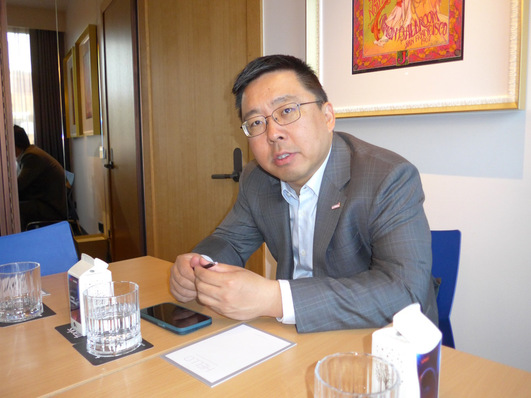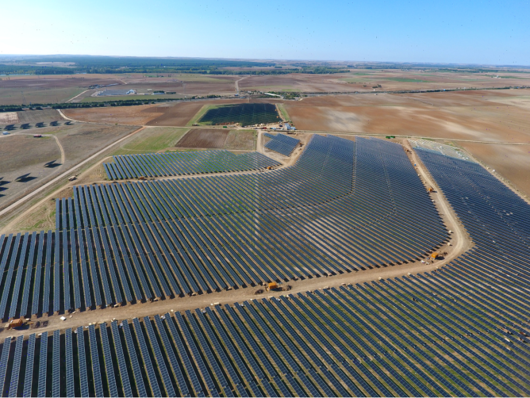The multi-storey building houses various administrations, including the local employment office. Three sides of the facade were equipped with pre-assembled photovoltaic modules, with a total output of 58 kilowatts.
High transparency to let daylight into the building
Project Manager Pierre Briere explains: "We chose the transparent double-glass modules from CS Wismar because they provide high light transmission with 32 cells. 30 percent transparency: that allows much light to still come into the building."
There is plenty of room between the wall of the building and the solar envelope: one metre. The mounting system for the modules was fixed to the walls with metal supports. On module optimiser has been omitted.
Solar energy used in the building
The wiring concept is relatively simple: There is a separate Huawei inverter for each façade side. The system was planned and simulated using the PVSyst software, a common application for the planning of photovoltaic systems. The façade modules were simulated at an inclination of 90 degrees and the appropriate orientation. On the roof, there is another smaller (13 kilowatt) installation. 100 percent of the energy generated is used in the building itself. The yield is expected to be around 50,000 kilowatt hours of solar power per year. (HS/mfo)
For a detailed description of this project and other reference buildings for solar architecture, please visit the architecture database Solar Age
You can now sign up for our upcoming pv Guided Tours at The smarter E Europe (Intersolar Europe, ees Europe, Power2Drive, EM-Power) in Munich in May 2019.
Have a look back at the highlights of last year’s pv Guided Tours.
Get the latest news about the solar industry.
Stay informed, subcribe to our twice-weekly newsletter.
Register here: https://www.pveurope.eu/newsletter







